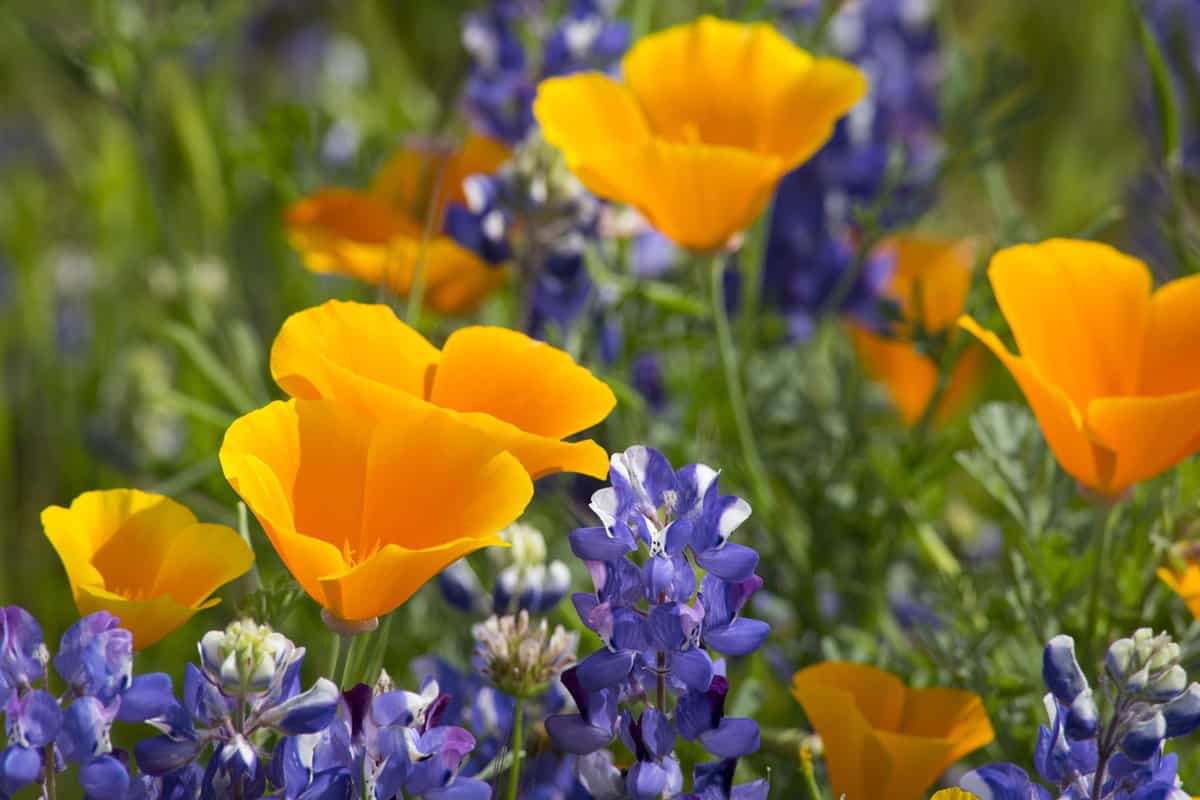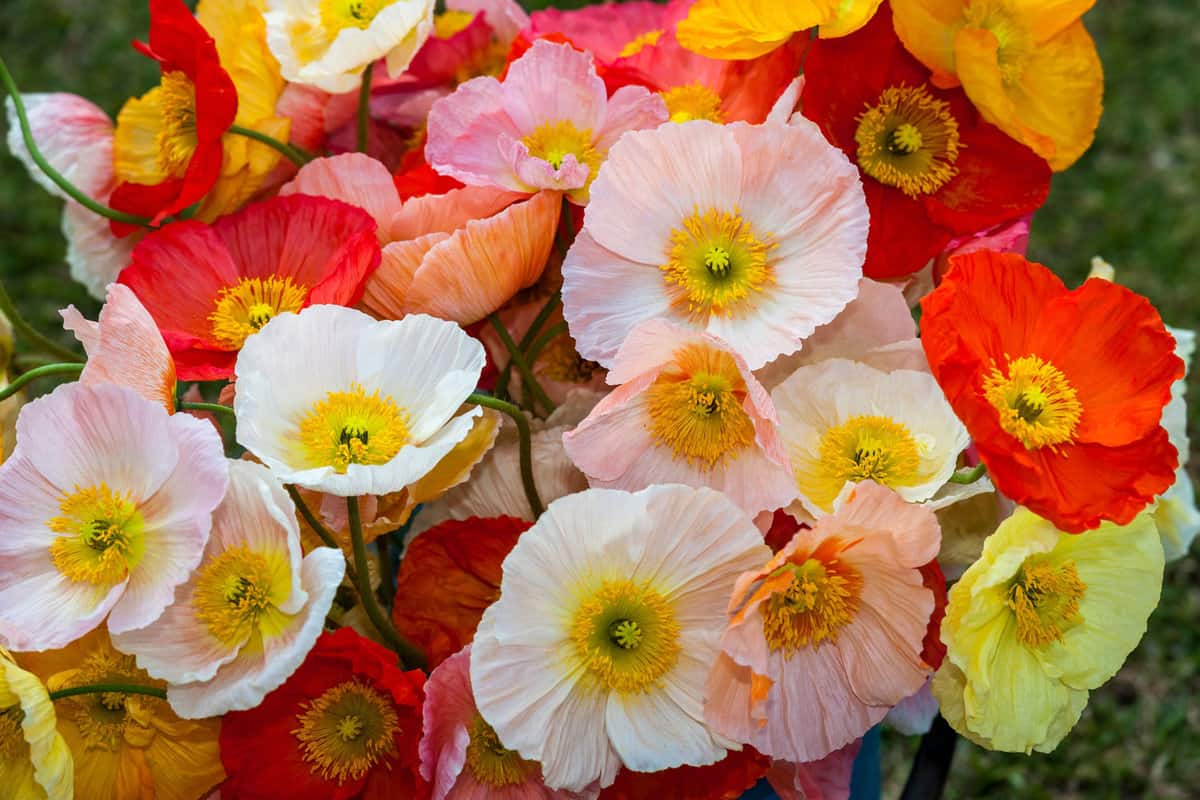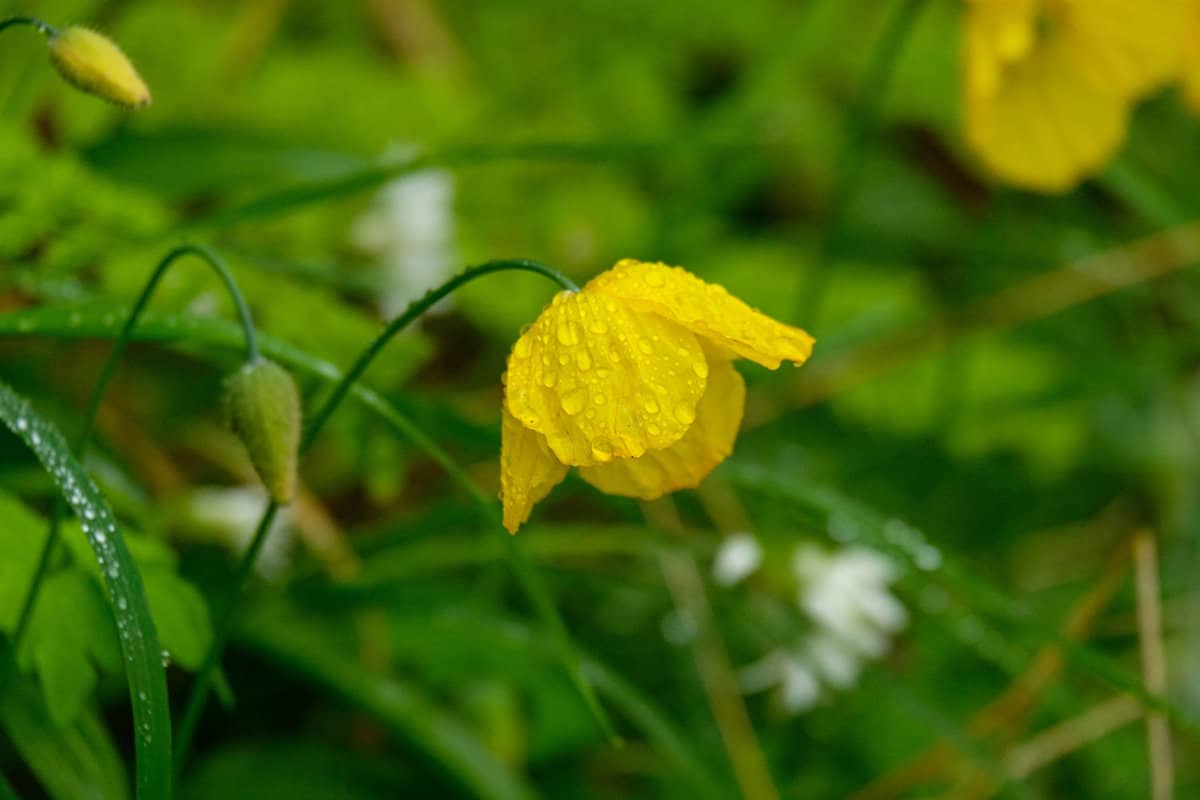Poppies are a beloved addition to any garden, with their vibrant colors and delicate petals.
But as the season draws to a close and the blooms begin to fade, many gardeners are left wondering what to do with their poppy plants.

With a little bit of care and attention, you can ensure that your poppies will continue to thrive and produce stunning blooms year after year.
In this guide, we'll take you through the steps you need to follow to keep your poppies healthy and beautiful, from deadheading to cutting and everything in between.
Understanding Poppy Plant Life Cycle
Poppies, also known as Papaver rhoeas L. - corn poppy are annual plants that have a life cycle of one year.
They grow from seed, produce flowers, and then die off. Understanding the life cycle of poppy plants is important if you want to ensure blooms for the next season.
What Month Do You Plant Poppies?
The best time to plant poppies is in the fall, around September or October.
This allows the seeds to germinate and establish roots before the winter frost sets in.

You can also plant poppies in the spring, but they may not bloom until the following year.
When planting poppies, it's important to choose a location that gets full sun and has well-draining soil.
Poppies don't like sitting in wet soil, so avoid planting them in areas that are prone to standing water.
Once your poppies have bloomed, you can collect the seeds and save them for the next season.
Simply shake the seed pods over a container to release the seeds, and then store them in a cool, dry place until you're ready to plant them.
Learn more: 31 Flowers That Need Little Water
When and How to Deadhead Poppy Plants
Deadheading poppies is an important task to ensure that your plants bloom again next season.

Deadheading is the process of removing spent blooms from the plant, which encourages new growth and prolongs blooming.
Identifying Spent Blooms
The first step in deadheading poppies is to identify the spent blooms.

Spent blooms are flowers that have faded and are no longer producing pollen.
They can be identified by their drooping appearance and the presence of a small seed pod at the base of the flower.
The seed pod is the future home of the seeds that the plant will produce.
Proper Technique for Deadheading
To deadhead poppies, you will need a pair of sharp, clean scissors or pruning shears.
Begin by locating the spent bloom and follow the stem down to where it meets the main stem of the plant.
Using your scissors or pruning shears, make a clean cut just above the first set of leaves below the spent bloom. This will remove the spent bloom and encourage new growth.
Use proper technique when deadheading poppies to avoid damaging the plant.
Use clean, sharp tools to avoid tearing or crushing the stem.
Additionally, be careful not to cut too far down the stem, as this can damage the plant and prevent new growth.
Harvesting Poppy Seeds
Harvesting poppy seeds is easy and straightforward.
Once the flowers have faded, the seed pods will start to dry out and turn brown. This is the perfect time to harvest the seeds.

To harvest poppy seeds, gently shake the pods over a container to release the seeds.
You can also use a pair of scissors to snip off the seed pods and collect them in a container.
Wear gloves when handling the seed pods, as they can be prickly and irritating to the skin.
Storing Poppy Seeds
Once you have harvested your poppy seeds, it is important to store them properly to ensure their viability for the next growing season.

Here are some tips for storing poppy seeds:
Dry the seeds thoroughly
Spread the seeds out in a single layer on a piece of paper or a tray and leave them in a warm, dry place for a few days until they are completely dry.
Store in a cool, dry place
Once the seeds are dry, transfer them to an airtight container and store them in a cool, dry place. A dark cupboard or pantry is ideal.
Avoid storing them in the refrigerator or freezer, as this can damage the seeds.
Label the container
Be sure to label the container with the variety of poppy seeds and the date they were harvested.
This will help you keep track of your seeds and ensure you are using fresh, viable seeds for planting.
Discover a hack here: Future-Proof Gardening By Saving Seeds In Envelopes
Preparing for Next Season's Blooms
If you want your poppy plants to bloom again next season, you need to take some steps to prepare the soil and plant the seeds properly.
Here are some tips to help you ensure a beautiful display of poppy flowers next year.
Preparing the Soil
Before planting your poppy seeds, you need to prepare the soil properly.

Here are some steps you can take to ensure that the soil is ready for planting:
- Remove any weeds or debris from the planting area.
- Loosen the soil with a garden fork or tiller to a depth of at least 6 inches.
- Add organic matter, such as compost or aged manure, to the soil to improve its fertility and drainage.
- Test the soil pH level and adjust it if necessary to a range of 6.0 to 7.0, which is ideal for growing poppies.
Planting the Seeds
Once you have prepared the soil, it's time to plant your poppy seeds.
Follow these steps to ensure that your seeds have the best chance of germinating and growing into healthy plants:
- Sow the seeds in early spring, as soon as the soil can be worked.
- Scatter the seeds thinly over the prepared soil, or plant them in rows spaced 12 to 18 inches apart.
- Cover the seeds lightly with soil, no more than 1/8 inch deep.
- Water the soil gently but thoroughly after planting, and keep it moist until the seeds germinate.
Just follow these steps and you can ensure that your poppy plants will bloom again next season and provide you with a beautiful display of colorful flowers.
Remember to deadhead your plants regularly to encourage more blooms and extend their bloom time.
Also, providing adequate water and fertilizer will help keep the plants healthy, which can in turn help the poppies bloom for a longer period of time.
Common Mistakes to Avoid
Taking care of your poppy plants is important if you want to enjoy their stunning blooms season after season.

But don't worry, it's not rocket science!
Just be sure to avoid these common mistakes that can hinder your poppies from reaching their full potential:
Overwatering
One of the biggest mistakes gardeners make with poppy plants is overwatering them.

While it's important to keep your plants hydrated, too much water can lead to root rot and other problems.
Make sure to check the soil regularly and only water your plants when the top inch of soil is dry to the touch.
Improper Deadheading
Deadheading your poppy plants is an important part of ensuring healthy blooms for next season.
However, it's important to do it correctly. Make sure to remove the entire spent flower, including the stem, and avoid cutting too close to the plant.
Cutting too close can damage the plant and make it more susceptible to disease.
Incorrect Storage of Seeds
If you're planning to save seeds from your poppy plants, it's important to store them correctly.
Make sure to wait until the seed pods have dried out before harvesting them, and store them in a cool, dry place.
Avoid storing them in plastic bags, which can trap moisture and cause the seeds to mold.
Concluding Thoughts
Taking care of your poppy plants after they have finished blooming can help ensure that they will bloom again next season.
By deadheading spent blooms, providing adequate water and fertilizer, and cutting the plants back to ground level, you can help encourage new growth and more blooms.
With proper care and attention, you can enjoy these stunning flowers year after year.
To learn more about sun-loving plants, explore this article: 39 Plants That Like Full Sun And Heat
